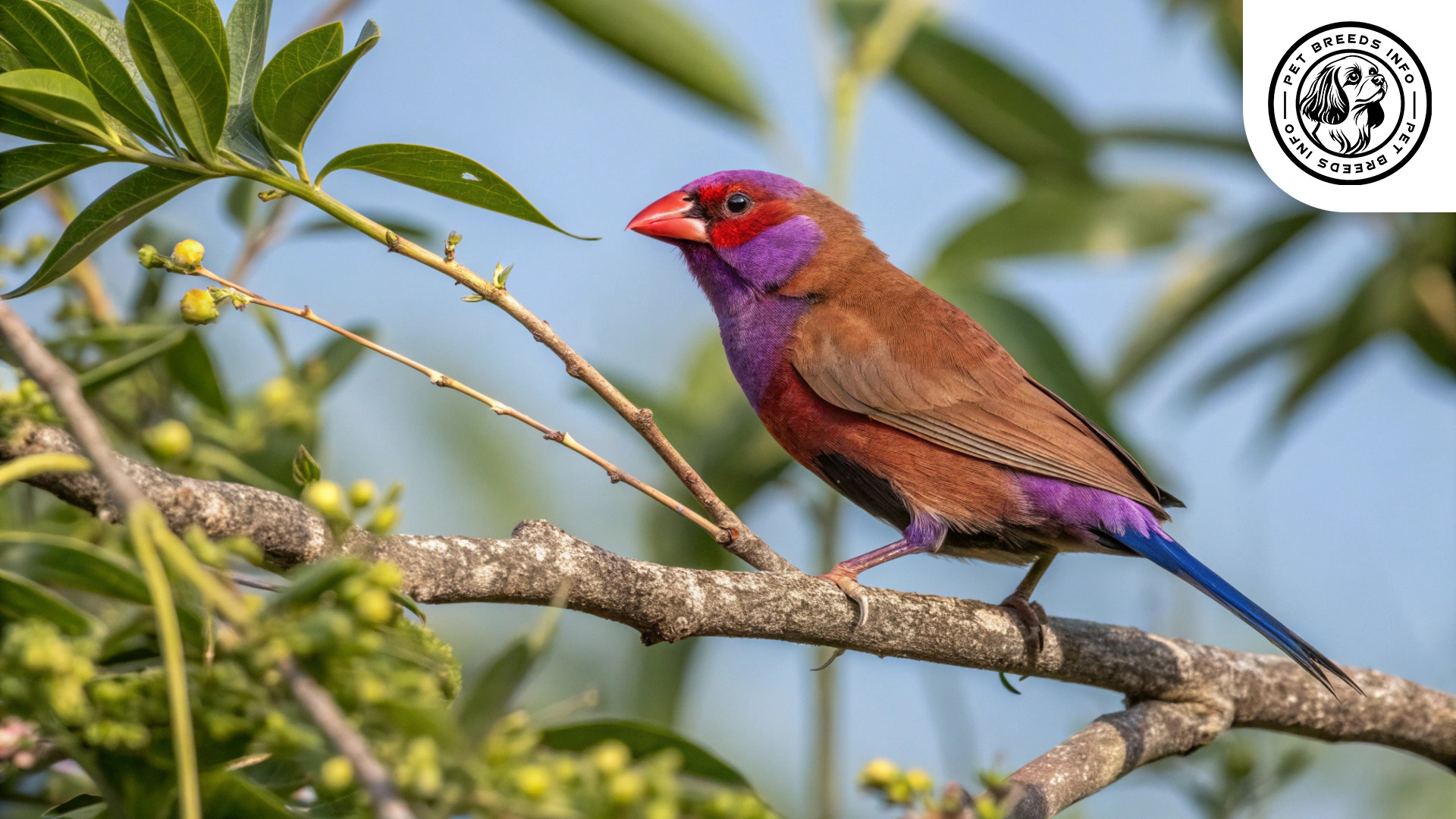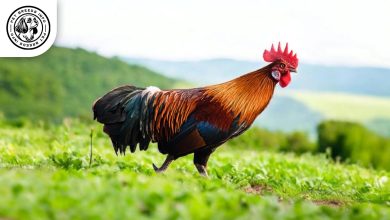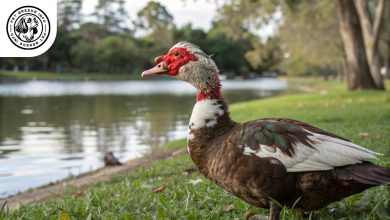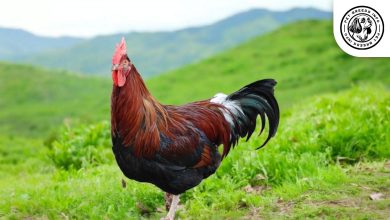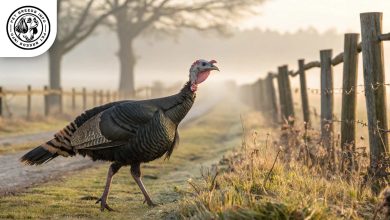Violet-eared Waxbill Bird: Personality, Lifespan, Food & Care
General Introduction of the Breed
The Violet-eared Waxbill (Granatina granatina) is a small, vibrantly colored finch species native to sub-Saharan Africa. It is also known as the Common Grenadier. This bird is primarily found in dry savannahs and shrublands, where it thrives in arid, open environments. The species has been admired for centuries due to its stunning plumage and melodious song. While they are sometimes kept as aviary birds, they require specific care to maintain their health and well-being.
Table of Contents
| Common Name | Violet-eared Waxbill |
| Scientific Name | Granatina granatina |
| Origin | Sub-Saharan Africa (dry savannahs and shrublands) |
| Size | 12–14 cm (4.7–5.5 in); 10–15 g |
| Lifespan | 5 to 8 years (in captivity) |
| Colors | Males: violet cheeks, chestnut body, blue tail; Females: muted tones |
| Talking Ability | None (not a mimic species) |
| Noise Level | Low (pleasant, soft song) |
| Social Behavior | Active, social with own species; males may be territorial |
Physical Characteristics
The Violet-eared Waxbill is a small bird, typically measuring between 12 and 14 cm (4.7 to 5.5 inches) in length, including the tail. They generally weigh around 10 to 15 grams.
These birds have a sleek, smooth coat of feathers with striking color variations. Males are recognized for their rich violet cheek patches, deep chestnut body, and bright blue tail. Females have more subdued coloration, usually brownish with faint violet markings.
They have dark, round eyes that enhance their expressive appearance. Their small, sharp beak is well-suited for eating seeds. Their tail is medium-length and pointed, complementing their agile flight movements.
The combination of vibrant colors and elegant shape makes the Violet-eared Waxbill one of the most visually captivating finches in the wild.
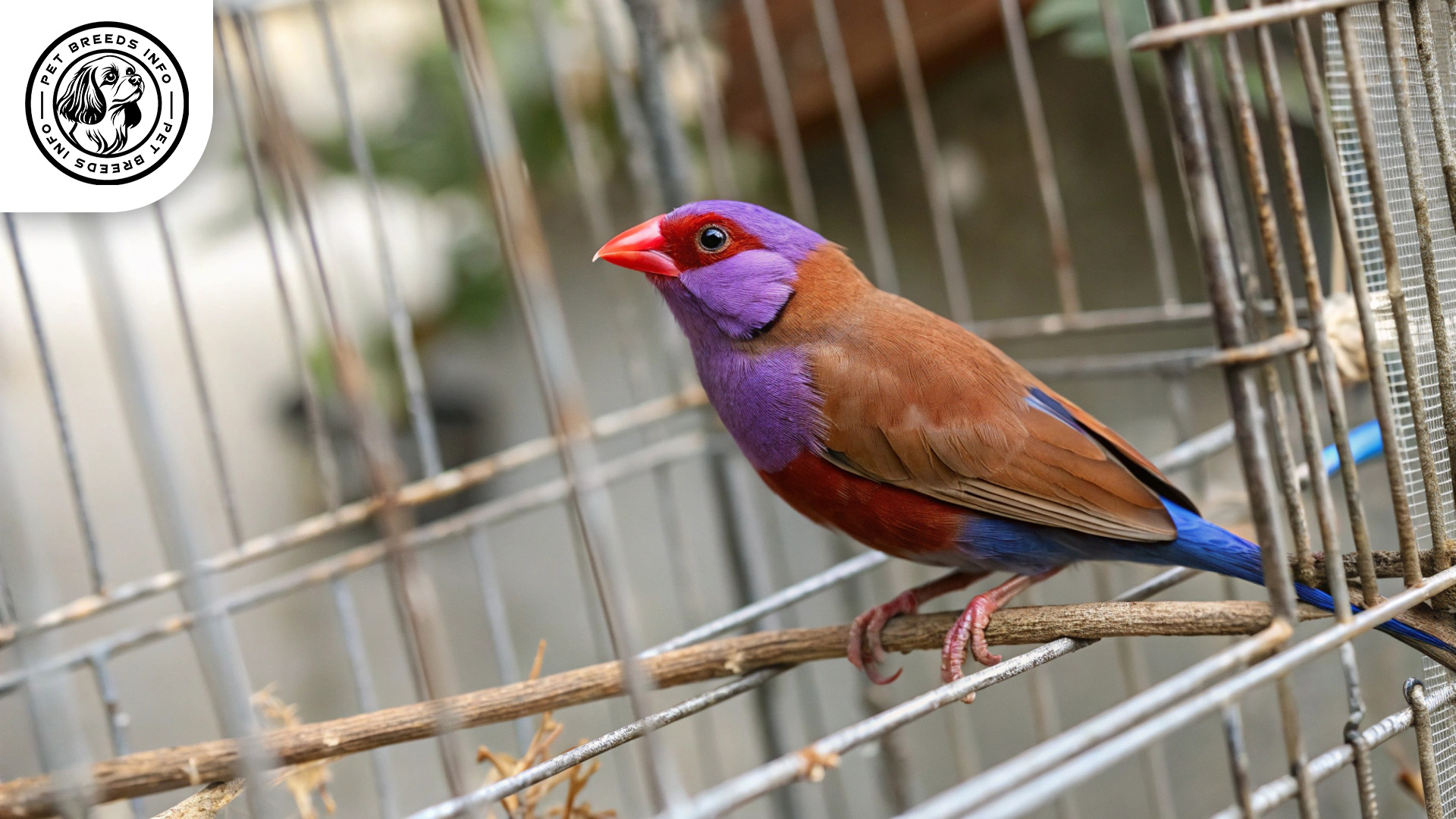
Personality and Temperament
The Violet-eared Waxbill is an intelligent bird with a curious and active personality. They are known for their high energy levels and require ample space to fly and explore.
Though they can form strong bonds with their owners, they are not highly dependent on human interaction. They prefer the company of their own species, making them ideal for aviary setups.
These birds are social but can exhibit territorial behaviors, especially the males, who may become aggressive toward other birds of similar size or appearance.
Their natural instinct for foraging makes them love engaging in playful activities, such as searching for seeds or hopping between branches.
Although adaptable, they are sensitive to sudden environmental changes, requiring a stable and stress-free habitat.
Read More: Toulouse Goose
Care and Maintenance Requirements
Violet-eared Waxbills require a spacious aviary or an adequately sized cage for optimal movement. Since they are active birds, they need space to fly freely.
Their cage or aviary should have plenty of perches and natural branches to encourage climbing and resting.
Grooming needs are minimal, but they benefit from access to shallow water baths to maintain feather health. Regular cleaning of their living space is essential to prevent bacterial growth and disease.
These birds are sensitive to extreme temperatures. A warm, stable environment away from direct drafts is ideal.
General hygiene practices include ensuring clean drinking water, proper nail length, and providing access to cuttlebones for beak health.
Diet and Nutrition
A balanced diet is essential for the health of the Violet-eared Waxbill. They primarily consume a variety of seeds, including millet and grass seeds.
They also enjoy fresh greens, fruits, and small insects such as mealworms to provide essential proteins.
Avoid feeding them avocados, chocolate, onions, and salty foods as these can be toxic.
Portion sizes should be moderate, with fresh food provided daily. Access to clean drinking water at all times is crucial for hydration.
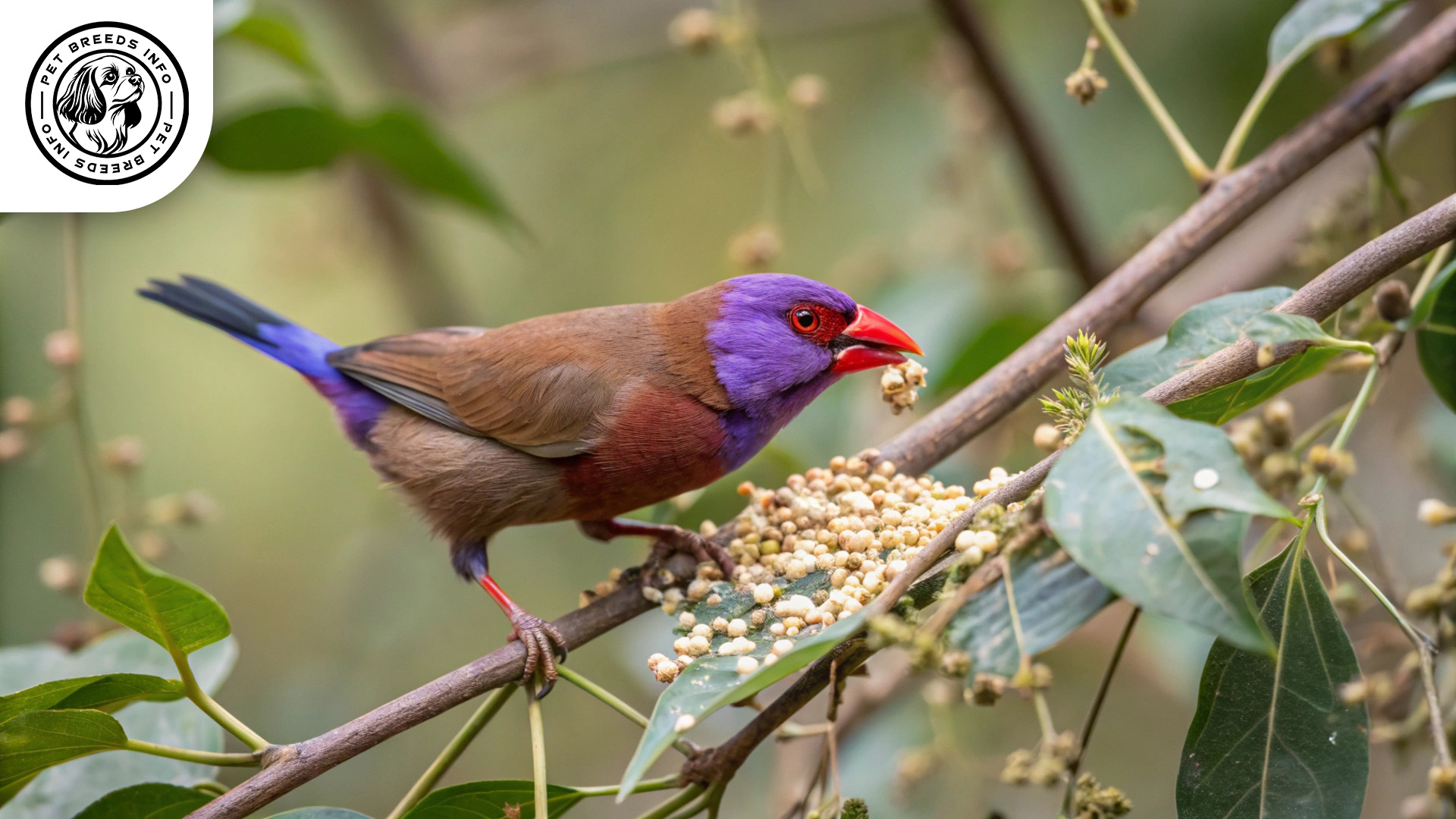
Health and Common Medical Issues
Violet-eared Waxbills are generally hardy birds but can develop health problems due to poor nutrition or environmental stress.
Common health issues include respiratory infections, mites, and malnutrition due to improper diet.
These birds have an average lifespan of 5 to 8 years in captivity when provided with proper care.
Regular vet check-ups are recommended to ensure they remain in good health. Standard vaccinations are not commonly required, but deworming and parasite prevention are beneficial.
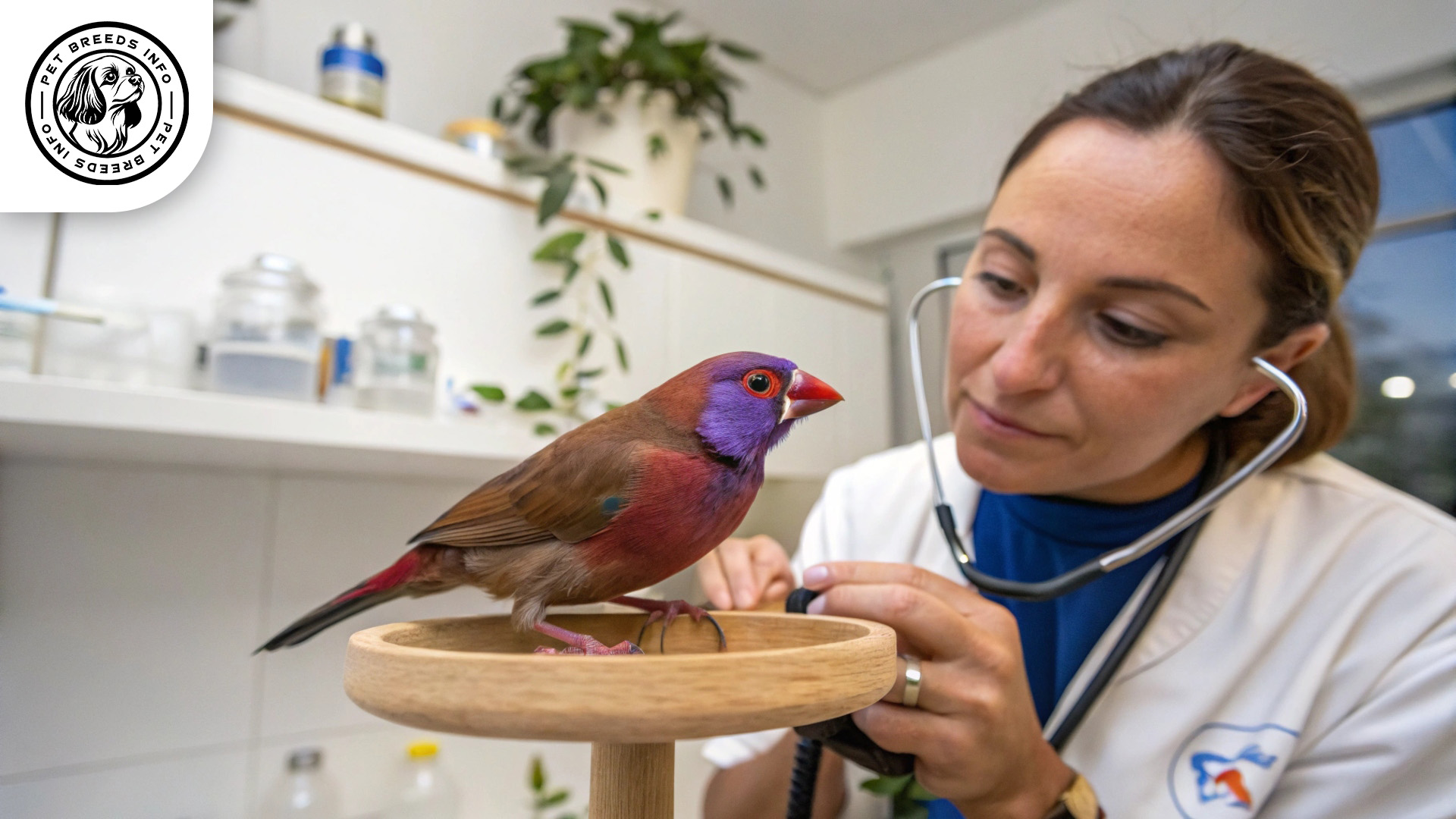
Training and Behavior Management
While not trainable in the way parrots are, Violet-eared Waxbills can learn to recognize their owners and become comfortable with their presence.
Early exposure to human interaction helps them become less skittish.
Providing a calm and enriched environment with plenty of natural elements allows them to exhibit their natural behaviors.
Positive reinforcement through treats and gentle approach methods can encourage trust-building.
Read More: Umbrella Cockatoo
Interaction with Other Animals and Humans
These birds can coexist with other finch species in aviaries, though males might display territorial tendencies.
They are generally better suited for experienced bird keepers rather than first-time pet owners.
They do not typically seek human bonding like parrots but can grow accustomed to human interaction with time.
Aviary settings with other non-aggressive finches provide the best social environment.
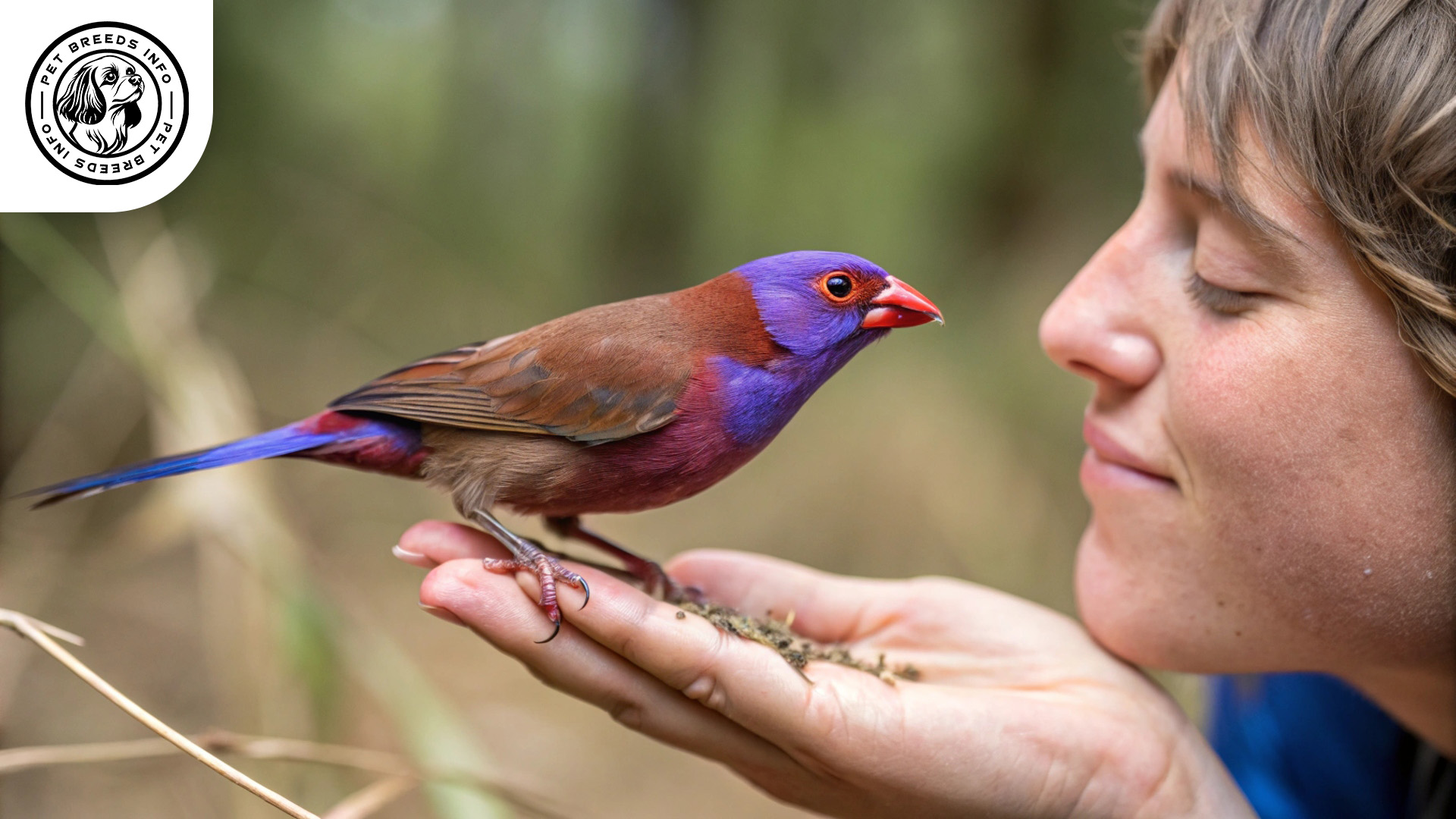
Price and Availability
The cost of a Violet-eared Waxbill depends on factors such as availability and breeder reputation. Prices typically range from $50 to $200.
Buyers should seek reputable breeders or aviary specialists to ensure they acquire healthy birds.
Since these birds require specific care, it is crucial for prospective owners to understand their needs before adopting or purchasing one.
Read More: Lutino Cockatiel
Conclusion and Final Thoughts
The Violet-eared Waxbill is a visually stunning and active bird that thrives in spacious environments. While they are relatively easy to care for, they require an experienced handler due to their specific dietary and housing needs.
These birds are ideal for owners who enjoy watching avian behavior rather than handling their pets frequently.
Before choosing this breed, prospective owners should consider their environment, ability to provide proper nutrition, and understanding of the bird’s social and activity needs.
With proper care and an enriched habitat, the Violet-eared Waxbill can be a delightful addition to an experienced bird keeper’s aviary.
FAQ
Where do Violet-eared Waxbills live in the wild?
They are native to dry savannahs and shrublands across sub-Saharan Africa.
Are Violet-eared Waxbills good pets for beginners?
Not really—they do best with experienced bird keepers due to their sensitivity and care needs.
What do Violet-eared Waxbills eat?
Their diet includes mixed seeds, greens, some fruit, and small insects like mealworms.
Can they live with other birds?
Yes, especially other peaceful finches—but males may become territorial with similar-looking species.
Do they need a big cage?
Yes. They are active birds that thrive in spacious aviaries or large cages with room to fly.
